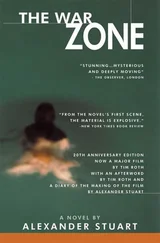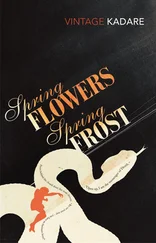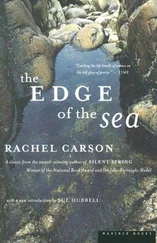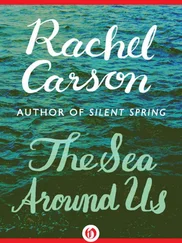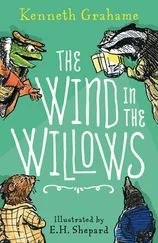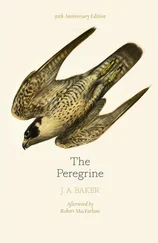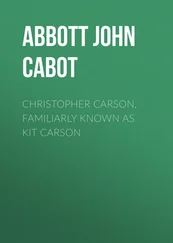Brown, A. W. A., Insect Control by Chemicals. New York: Wiley, 1951.
Toivonen, T., et al., “Parathion Poisoning Increasing Frequency in Finland,” Lancet, Vol. 2 (1959), No. 7095, pp. 175–76.
Hayes, Wayland J., Jr., “Pesticides in Relation to Public Health,” Annual Rev. Entomol., Vol. 5 (1960), pp. 379–404.
Occupational Disease in California Attributed to Pesticides and Other Agricultural Chemicals. Calif. Dept. of Public Health, 1957, 1958, 1959, and 1960.
Quinby, Griffith E., and A. B. Lemmon, “Parathion Residues As a Cause of Poisoning in Crop Workers,” Jour. Am. Med. Assn., Vol. 166 (Feb. 15, 1958), pp. 740–46.
Carman, G. C., et al., “Absorption of DDT and Parathion by Fruits,” Abstracts, 115th Meeting Am. Chem. Soc. (1949), p. 30A.
Clinical Memoranda on Economic Poisons, p. 11.
Frawley, John P., et al., “Marked Potentiation in Mammalian Toxicity from Simultaneous Administration of Two Anticholinesterase Compounds,” Jour. Pharmacol, and Exper. Therapeut., Vol. 121 (1957), No. 1, pp. 96–106.
Rosenberg, Philip, and J. M. Coon, “Potentiation between Cholinesterase Inhibitors,” Proc. Soc. Exper. Biol, and Med., Vol. 97 (1958), pp. 836–39.
Dubois, Kenneth, P., “Potentiation of the Toxicity of Insecticidal Organic Phosphates,” A.M.A. Archives Indus. Health, Vol. 18 (Dec. 1958), pp. 488–96.
Murphy, S. D., et al., “Potentiation of Toxicity of Malathion by Triorthotolyl Phosphate,” Proc. Soc. Exper. Biol, and Med., Vol. 100 (March 1959), pp. 483–87.
Graham, R. C. B., et al., “The Effect of Some Organophosphorus and Chlorinated Hydrocarbon Insecticides on the Toxicity of Several Muscle Relaxants,” four. Pharm. and Pharmacol., Vol. 9 (1957), pp. 312–19.
Rosenberg, Philip, and J. M. Coon, “Increase of Hexobarbital Sleeping Time by Certain Anticholinesterases,” Proc. Soc. Exper. Biol, and Med., Vol. 98 (1958), pp. 650–52.
Dubois, “Potentiation of Toxicity.”
Hurd-Karrer, A. M., and F. W. Poos, “Toxicity of Selenium-Containing Plants to Aphids,” Science, Vol. 84 (1936), pp. 252.
Ripper, W. E., “The Status of Systemic Insecticides in Pest Control Practices,” Advances in Pest Control Research. New York: Interscience, 1957. Vol. 1, pp. 305–52.
Occupational Disease in California, 1959.
Glynne-Jones, G. D., and W. D. E. Thomas, “Experiments on the Possible Contamination of Honey with Schradan,” Annals Appl. Biol., Vol. 40 (1953), p. 546.
Radeleff, R. D., et al., The Acute Toxicity of Chlorinated Hydrocarbon and Organic Phosphorus Insecticides to Livestock. U.S. Dept. of Agric. Technical Bulletin 1122 (1955).
Brooks, F. A., “The Drifting of Poisonous Dusts Applied by Airplanes and Land Rigs,” Agric. Engin., Vol. 28 (1947), No. 6, pp. 233–39.
Stevens, Donald B., “Recent Developments in New York State’s Program Regarding Use of Chemicals to Control Aquatic Vegetation,” paper presented at 13th Annual Meeting Northeastern Weed Control Conf. (Jan. 8, 1959).
Anon., “No More Arsenic,” Economist , Oct. 10, 1959.
“Arsenites in Agriculture,” Lancet, Vol. 1 (1960), p. 178.
Horner, Warren D., “Dinitrophenol and Its Relation to Formation of Cataract,” (A.M.A.) Archives Ophthalmol., Vol. 27 (1942), pp. 1097–1121.
Weinbach, Eugene C., “Biochemical Basis for the Toxicity of Pentachlorophenol,” Proc. Natl. Acad. Sci., Vol. 43 (1957), No. 5, pp. 393–97.
CHAPTER 4: SURFACE WATERS AND UNDERGROUND SEAS
Biological Problems in Water Pollution. Transactions, 1959 seminar. U.S. Public Health Service Technical Report W60-3 (1960).
“Report on Environmental Health Problems,” Hearings, 86th Congress, Subcom. of Com. on Appropriations, March 1960, p. 78.
Tarzwell, Clarence M., “Pollutional Effects of Organic Insecticides to Fishes,” Transactions, 24th North Am. Wildlife Conf. (1959), Washington, D.C., pp. 132–42. Pub. by Wildlife Management Inst.
Nicholson, H. Page, “Insecticide Pollution of Water Resources,” Jour. Am. Waterworks Assn., Vol. 51 (1959), pp. 981–86.
Woodward, Richard L., “Effects of Pesticides in Water Supplies,” Jour. Am. Waterworks Assn., Vol. 52 (1960), No. 11, pp. 1367–72.
Cope, Oliver B., “The Retention of DDT by Trout and Whitefish,” in Biological Problems in Water Pollution, pp. 72–75.
Kuenen, P. H., Realms of Water. New York: Wiley, 1955.
Gilluly, James, et al., Principles of Geology. San Francisco: Freeman, 1951.
Walton, Graham, “Public Health Aspects of the Contamination of Ground Water in South Platte River Basin in Vicinity of Henderson, Colorado, August, 1959.” U.S. Public Health Service, Nov. 2, 1959. Mimeo.
“Report on Environmental Health Problems.”
Hueper, W. C., “Cancer Hazards from Natural and Artificial Water Pollutants,” Proc., Conf. on Physiol. Aspects of Water Quality, Washington, D.C., Sept. 8–9, 1960. U.S. Public Health Service.
Hunt, E. G., and A. I. Bischoff, “Inimical Effects on Wildlife of Periodic DDD Applications to Clear Lake,” Calif. Fish and Game, Vol. 46 (1960), No. 1, pp. 91–106.
Woodard, G., et al., “Effects Observed in Dogs Following the Prolonged Feeding of DDT and Its Analogues,” Federation Proc., Vol. 7 (1948), No. 1, p. 266.
Nelson, A. A., and G. Woodard, “Severe Adrenal Cortical Atrophy (Cytotoxic) and Hepatic Damage Produced in Dogs by Feeding DDD or TDE,” (A.M.A.) Archives Path., Vol. 48 (1949), p. 387.
Zimmermann, B., et al., “The Effects of DDD on the Human Adrenal; Attempts to Use an Adrenal-Destructive Agent in the Treatment of Disseminated Mammary and Prostatic Cancer,” Cancer, Vol. 9 (1956), pp. 940–48.
Cohen, Jesse M., et al., “Effect of Fish Poisons on Water Supplies. I. Removal of Toxic Materials,” Jour. Am. Waterworks Assn., Vol. 52 (1960), No. 12, pp. 1551–65. “II. Odor Problems,” Vol. 53 (1960), No. 1, pp. 49–61. “III. Field Study, Dickinson, North Dakota,” Vol. 53 (1961), No. 2, pp. 233–46.
Hueper, “Cancer Hazards from Water Pollutants.”
CHAPTER 5: REALMS OF THE SOIL
Simonson, Roy W., “What Soils Are,” Yearbook of Agric., U.S. Dept. of Agric., 1957, pp. 17–31.
Clark, Francis E., “Living Organisms in the Soil,” Yearbook of Agric., U.S. Dept. of Agric., 1957, pp. 157–65.
Farb, Peter, Living Earth. New York: Harper, 1959.
Lichtenstein, E. P., and K. R. Schulz, “Persistence of Some Chlorinated Hydrocarbon Insecticides As Influenced by Soil Types, Rate of Application and Temperature,” Jour. Econ. Entomol., Vol. 52 (1959), No. 1, pp. 124–31.
Thomas, F. J. D., “The Residual Effects of Crop-Protection Chemicals in the Soil,” in Proc., 2nd Internatl. Plant Protection Conf. (1956), Fernhurst Research Station, England.
Eno, Charles F., “Chlorinated Hydrocarbon Insecticides: What Have They Done to Our Soil?” Sunshine State Agric. Research Report for July 1959.
Mader, Donald L., “Effect of Humus of Different Origin in Moderating the Toxicity of Biocides.” Doctorate thesis, Univ. of Wise., 1960.
Sheals, J. G., “Soil Population Studies. I. The Effects of Cultivation and Treatment with Insecticides,” Bull. Entomol. Research, Vol. 47 (Dec. 1956), pp. 803–22.
Hetrick, L. A., “Ten Years of Testing Organic Insecticides As Soil Poisons against the Eastern Subterranean Termite,” Jour. Econ. Entomol., Vol. 50 (1957), p. 316.
Читать дальше

